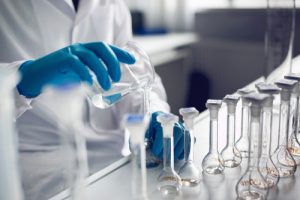Water & Environmental Testing: Where we are today…

As the United Kingdom marks eighteen months since the start of the Covid19 lockdowns, Anatune’s Senior Application Chemist, Jonathan Dunscombe, offers us his expert insight about the current state of Water & Environmental Testing sector, as well as his views on what the future has in store…

Jonathan Dunscombe, Anatune Senior Application Chemist
“It’s safe to say that the past eighteen months has been one of the most challenging periods of time to live through. When the clock struck midnight on January 1st 2020, nobody would have thought that three months later the world would be in total lockdown and the memory of performing any social task a distant one.
But as in any period of time, the show must go on. As such, many services continued unabated, though perhaps altered to account for requirements and strains that a global pandemic imposes.
Of those continuing services, water and environmental testing was one such area that continued along in the face of everything.
Clean water still needs to be provided. It must therefore tested and treated to ensure its cleanliness and safety. Pesticide levels still need monitoring. Disinfectant by-products such as trihalomethanes must be understood. And other compounds such as geosmin must always be monitored to ensure the water is safe to drink. In the absence of revolutionary technological advancements or regulations, this analysis will always remain critical to safe and successful public infrastructure.
However, behind the scenes things are changing regarding the routine analysis of these unwanted compounds.
Developing Regulations…
The most recent of these being the requirement to monitor Uncertainty of Measure (UoM) and resulting revalidation of methods to ensure they are still fit for purpose for the new regulation in adherence to limits of quantitation, bias and precision.
This had led to many methods to being updated and changed to improve the robustness or sensitivity.
A new round of Chemical Investigation Program (CIP 3) also kicked off which, along with other regulations such as the EU Water Framework Directive, will lead to new analyses becoming routine.
Future Needs…
Programs such as CIP also help us look to the future; a world where testing for Per- and Poly-Fluorinated Alkyl Substances (PFAS) are routinely investigated, one where testing for microplastics may be as commonplace as testing for polychlorinated biphenyls and with the growing problem of climate change, sample numbers are only ever going to increase for geosmin analysis.
Something which also became a point of discussion during the pandemic was air quality. Therefore, ensuring we have robust methodologies and instrumentation for monitoring all relevant parameters will always be a high priority.
We will also need to make decisions on other important topics. For example, reducing our reliance on helium and switching to hydrogen as a carrier gas. Environmental and cost-based decisions on the methods we choose are going to become even more important than they were.
While we evaluate events of the eighteen months and do our best to keep everything ‘ticking along’, we must also keep our eyes on the future to make sure we are adequately equipped for what will come.”
Visit our Water & Environmental section or CONTACT US for more information

